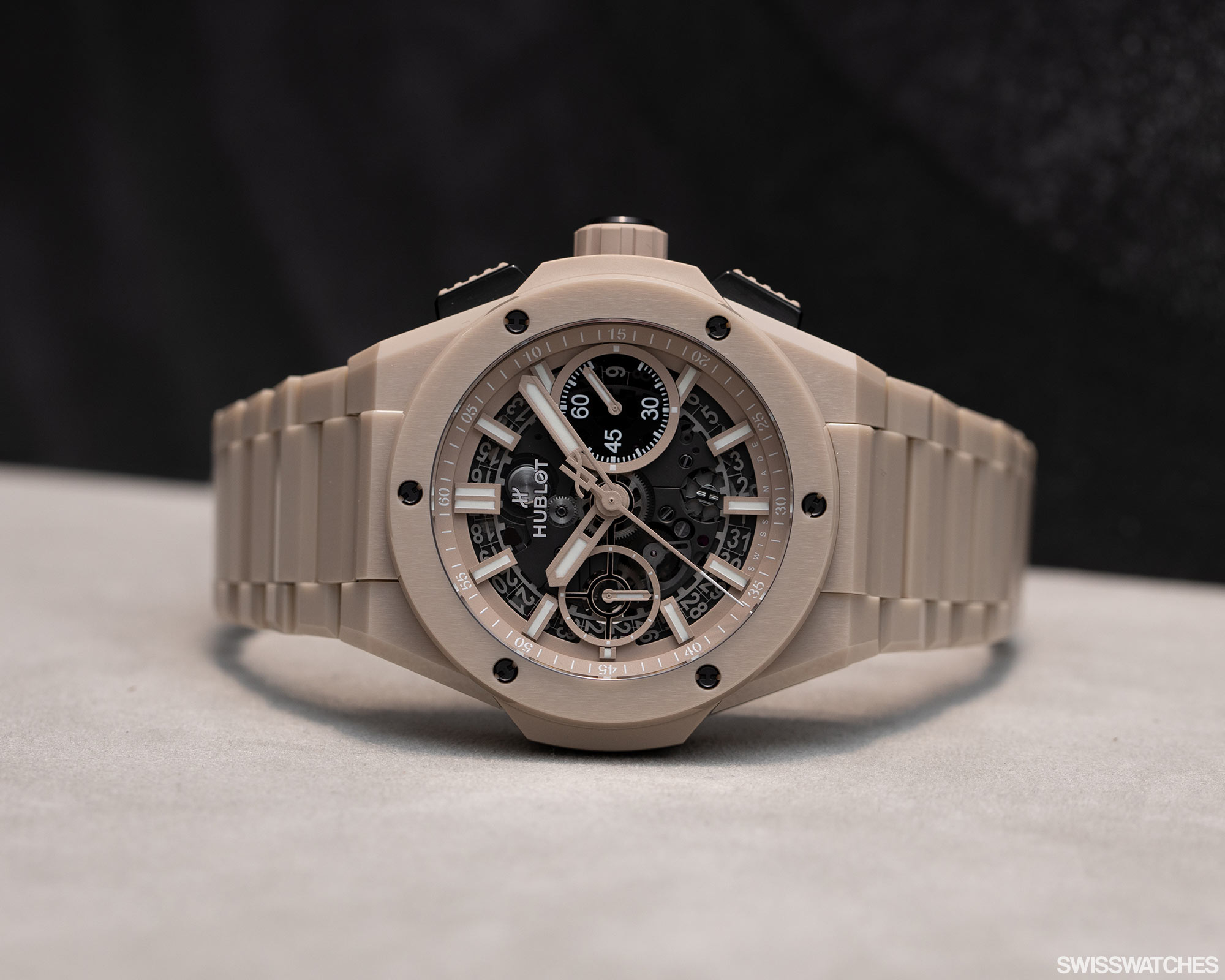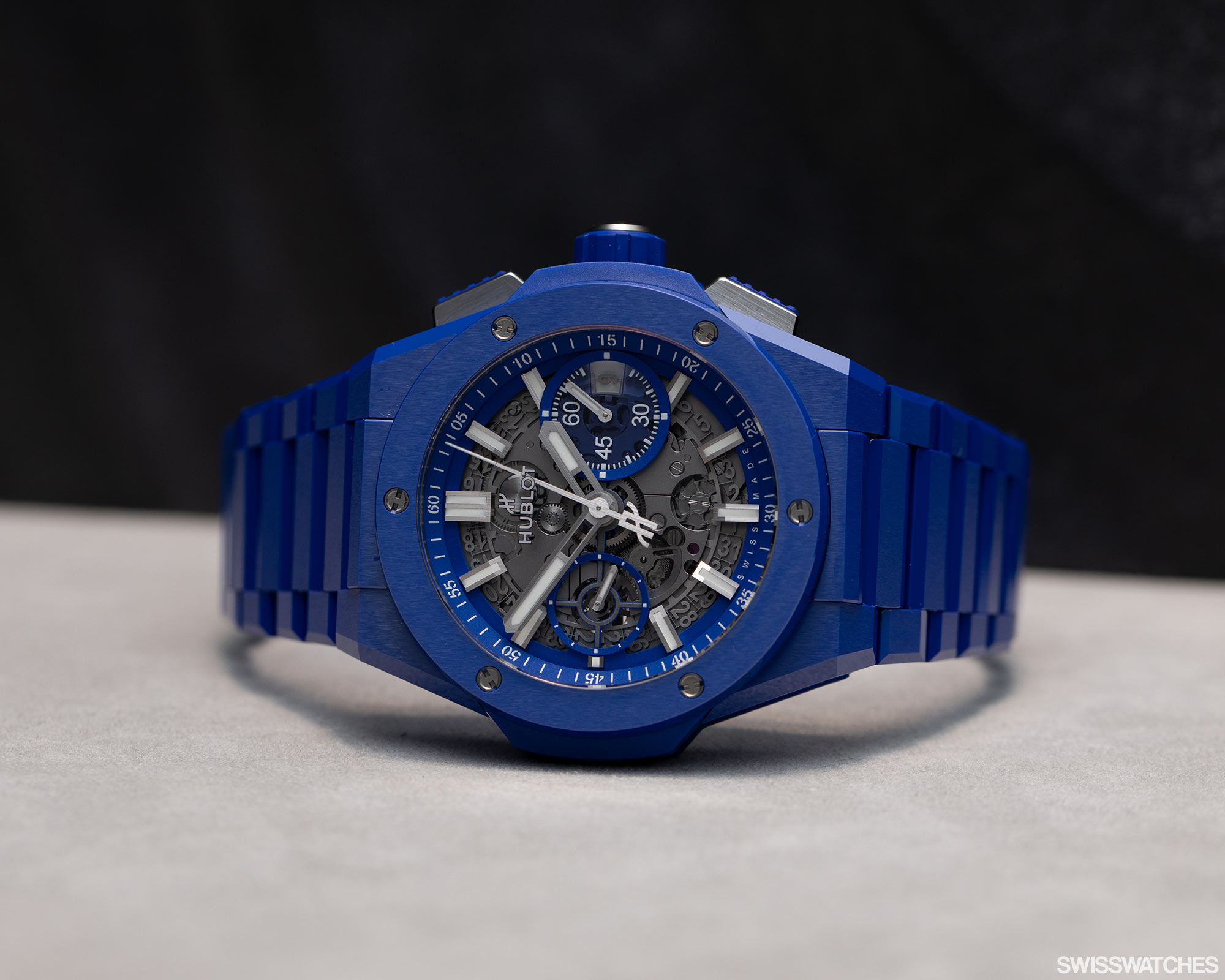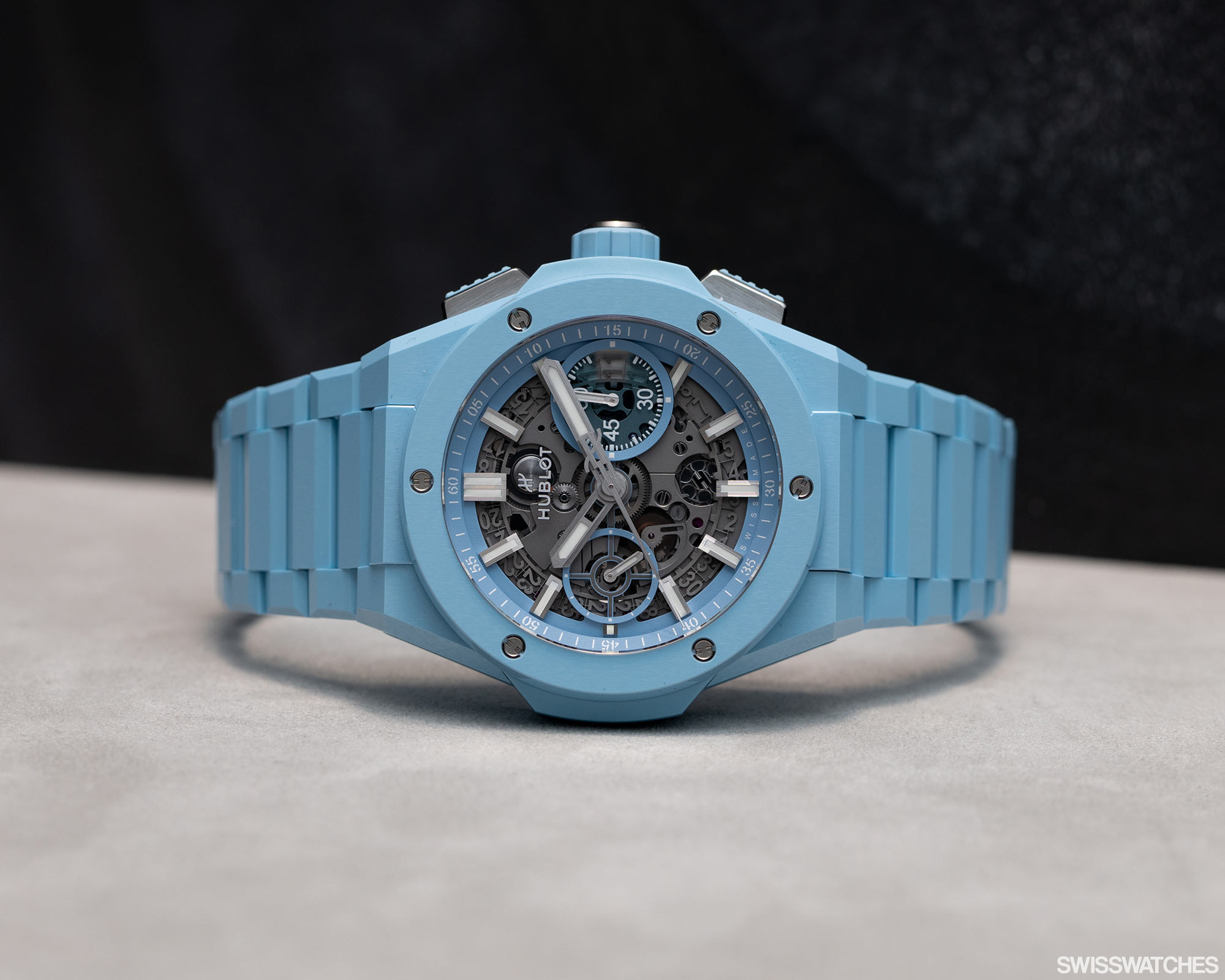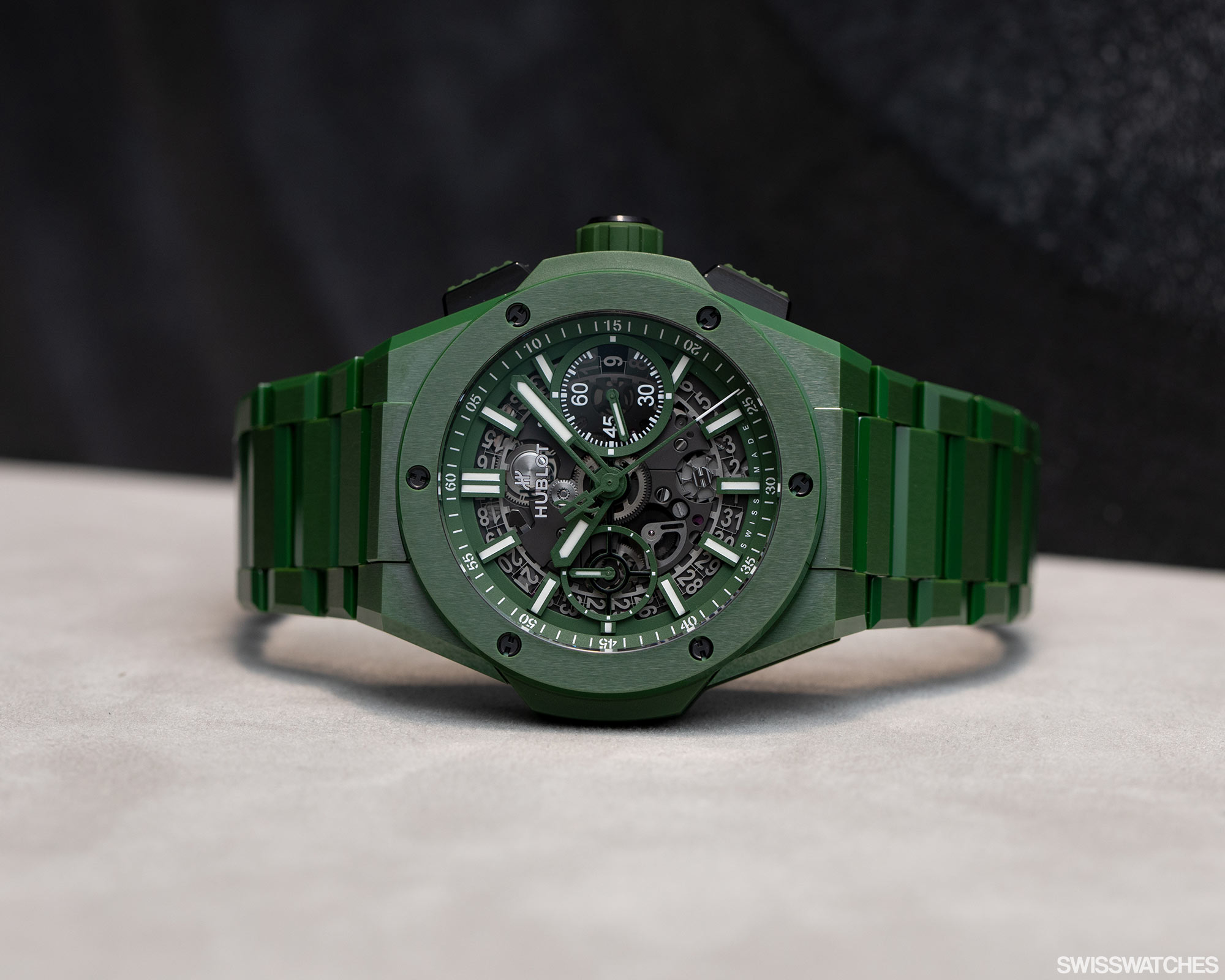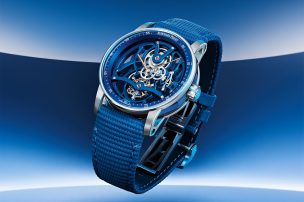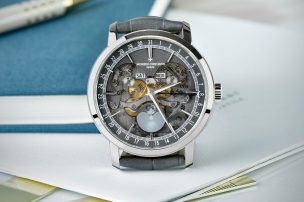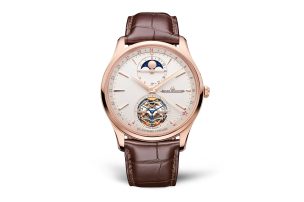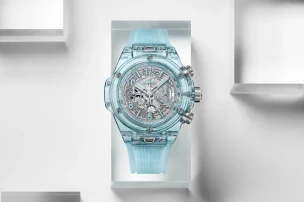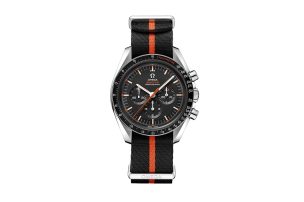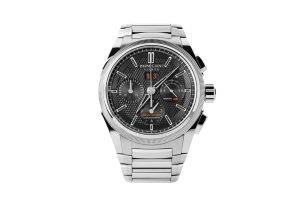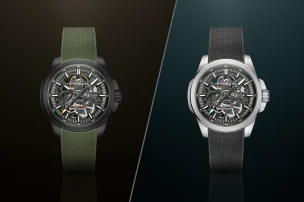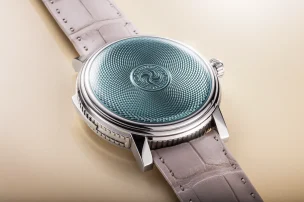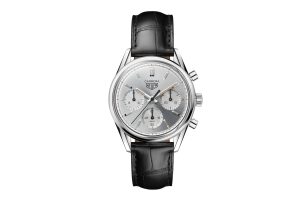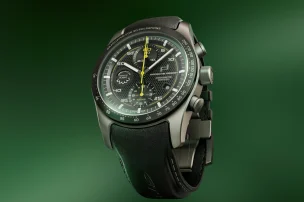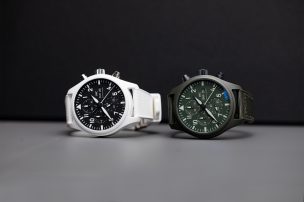
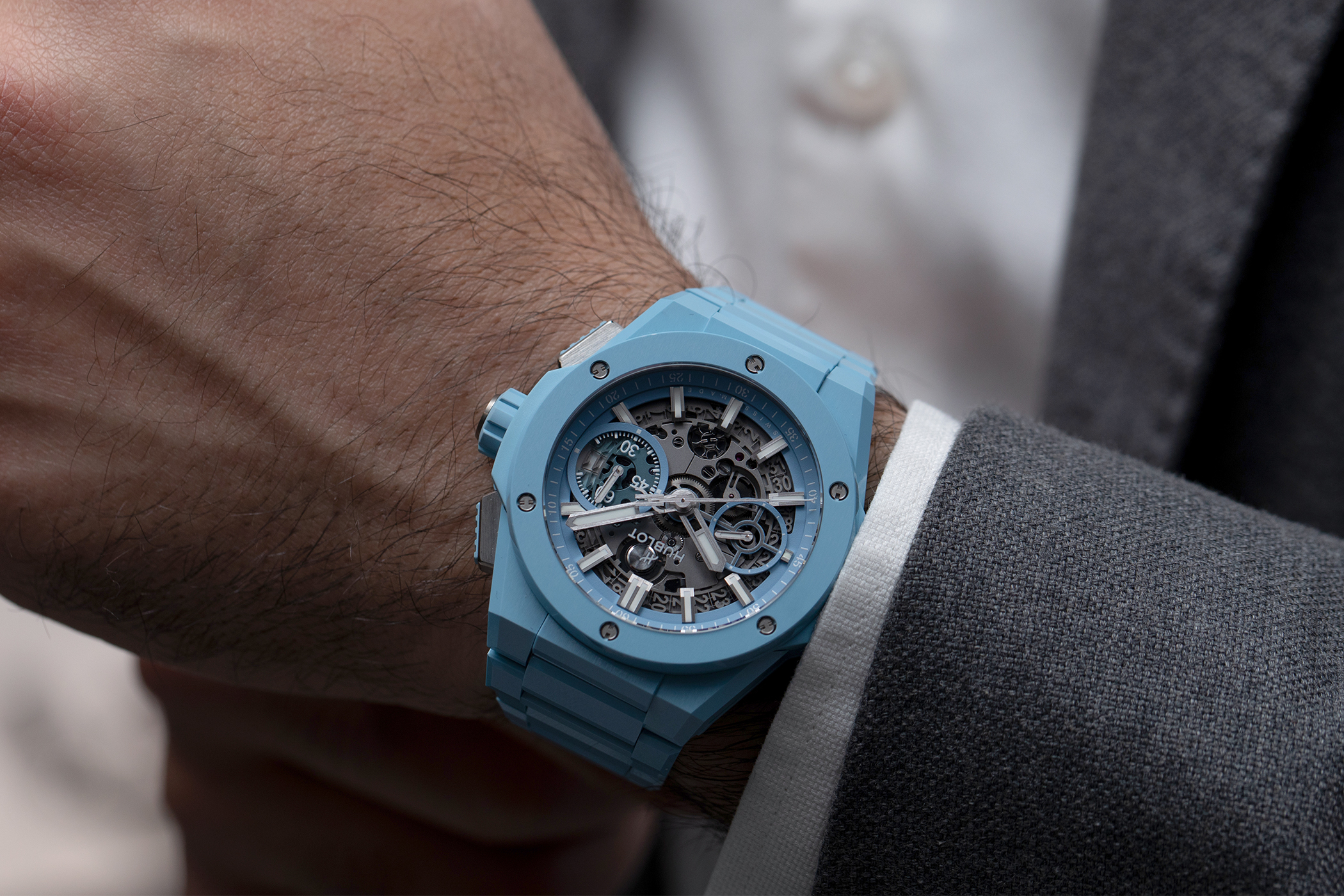
Two Years of Hublot Big Bang Integral: A Rapidly Growing Collection
With barely 40 years under its belt, Hublot is a fairly young watch brand. Despite this, it is by no means lacking in self-confidence in an industry where many of the biggest horology houses have a history that stretches back a good 150 years or more. Hublot’s self-assurance is at least partly due to the disruptive mentality that it has pursued since its founding in 1980 by Carlo Crocco. It immediately kicked off with a provocative approach to its designs. Hublot’s first ever model, the Classic Original, had a striking porthole design, while combining black rubber with a gold case. Crocco was quick to define his brand, shaping the brand according to the motto: “We are the horological alchemists of tomorrow.”
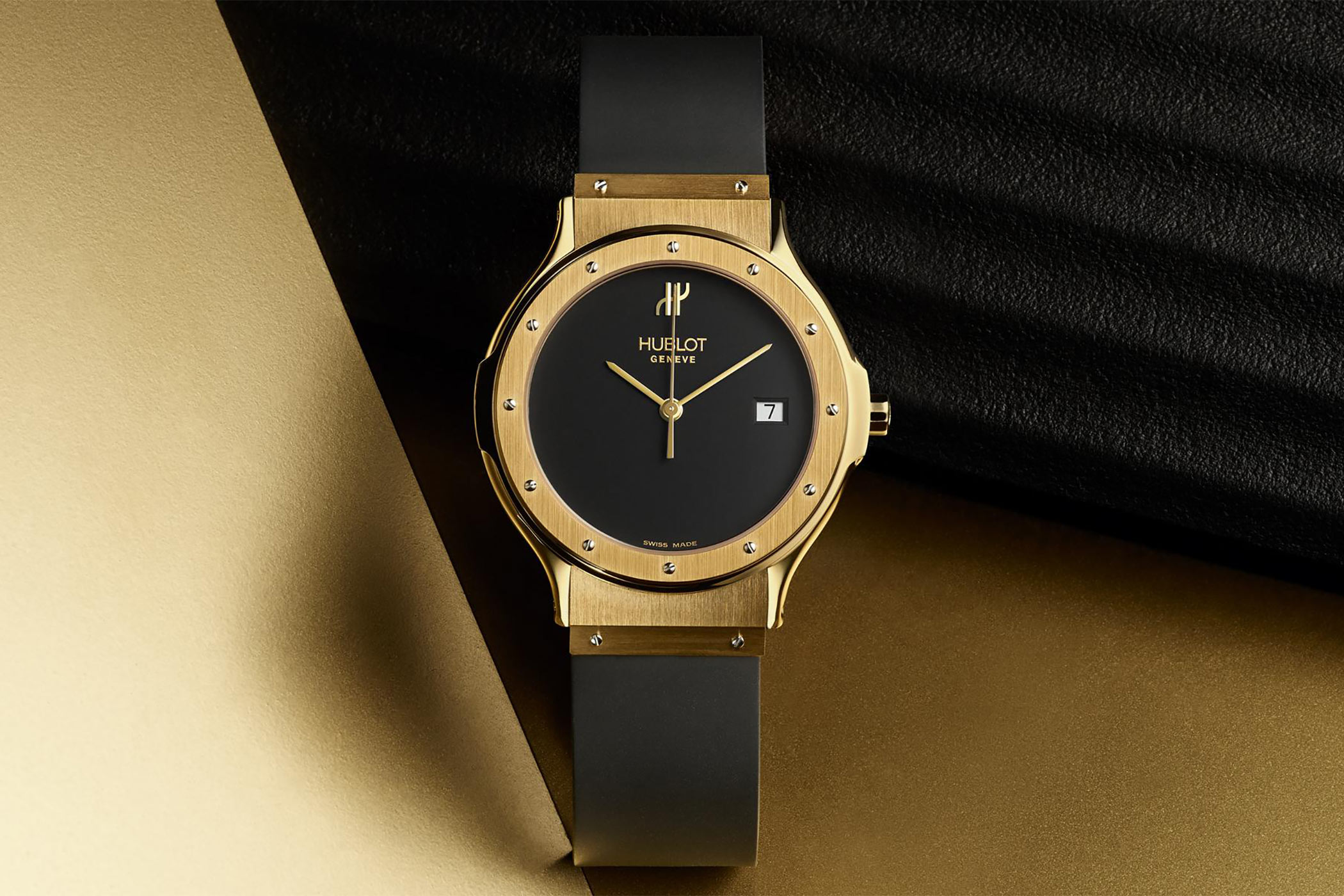
Under the leadership of Jean Claude Biver from 2004, Crocco’s vision of Hublot was transported into a new era. Hublot began to create new materials such as scratch-resistant Magic Gold, combined and fused gold, steel and brass with carbon, Kevlar, and rubber. Hublot also developed its own manufacture calibres such as the UNICO, Meca-10, and even its own tourbillon movements. Prior to the takeover, only quartz movements were used. In 2005, Hublot presented the Big Bang, a watch made of steel, ceramics and rubber, and in 2006 the first all-black watch, which was – as is often the case in this traditional industry – initially ridiculed, but now imitated by many. In 2020, Hublot presented the Big Bang Integral, showcasing the first integrated bracelets to use materials such as titanium, King Gold and ceramic, which are particularly complex to manufacture. The Integral motif remains a highly explosive topic at Hublot, as the new releases of the last two years show.
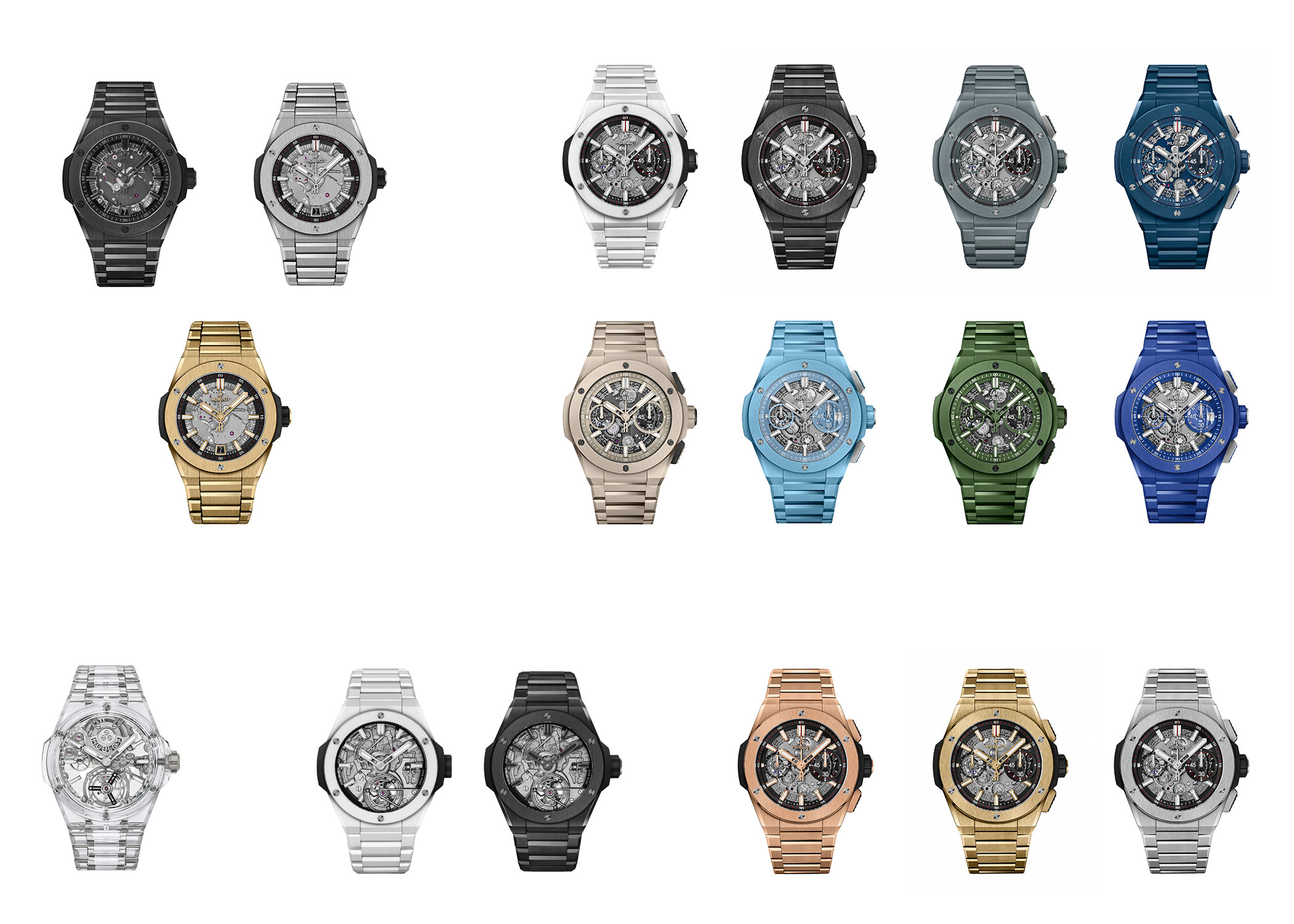
2020: Big Bang Integral
In 2020, fifteen years after the launch of the Big Bang, Hublot unveiled a custom integrated bracelet for its flagship collection. Remarkably, this was also the first time that it was really noted that the Big Bang previously had no integrated bracelets at all. Integrated means not only that the strap seamlessly merges with the case, but also that it is made of the same material as the rest of the watch. Yet the design of the Big Bang was predestined for integrated straps, and in a way, the bracelet options of the Big Bang have always seemed to merge with the case.
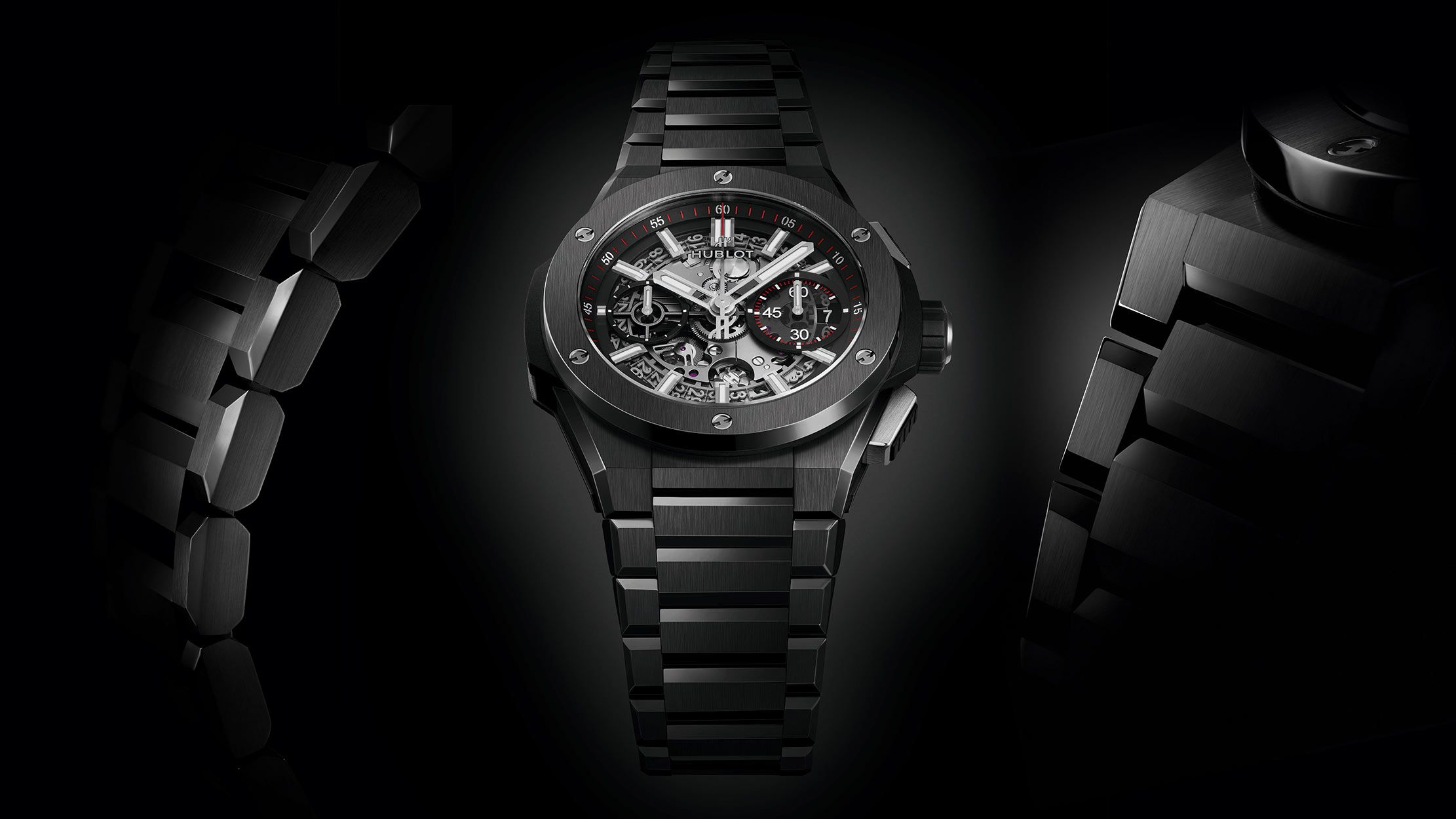
The three-link bracelets introduced in 2020 blend seamlessly with the sharply edged case. The front-facing surfaces of the bracelet links showcase a satin finish corresponding to the case and bezel, while the bevels are polished to create a harmonious, unified look. Accordingly, the case is also slightly revised – the pushers revert back to the original design from 2005, which were square instead of round as in the later Big Bang models. The Big Bang models presented on integrated bracelets are a tad more angular, with sharper edges. The satin-finished surfaces and polished edges reflect the light – especially on ceramic –a touch more intensely than the line’s predecessors. Finally, the dial no longer features Arabic numerals, but baton hour markers.
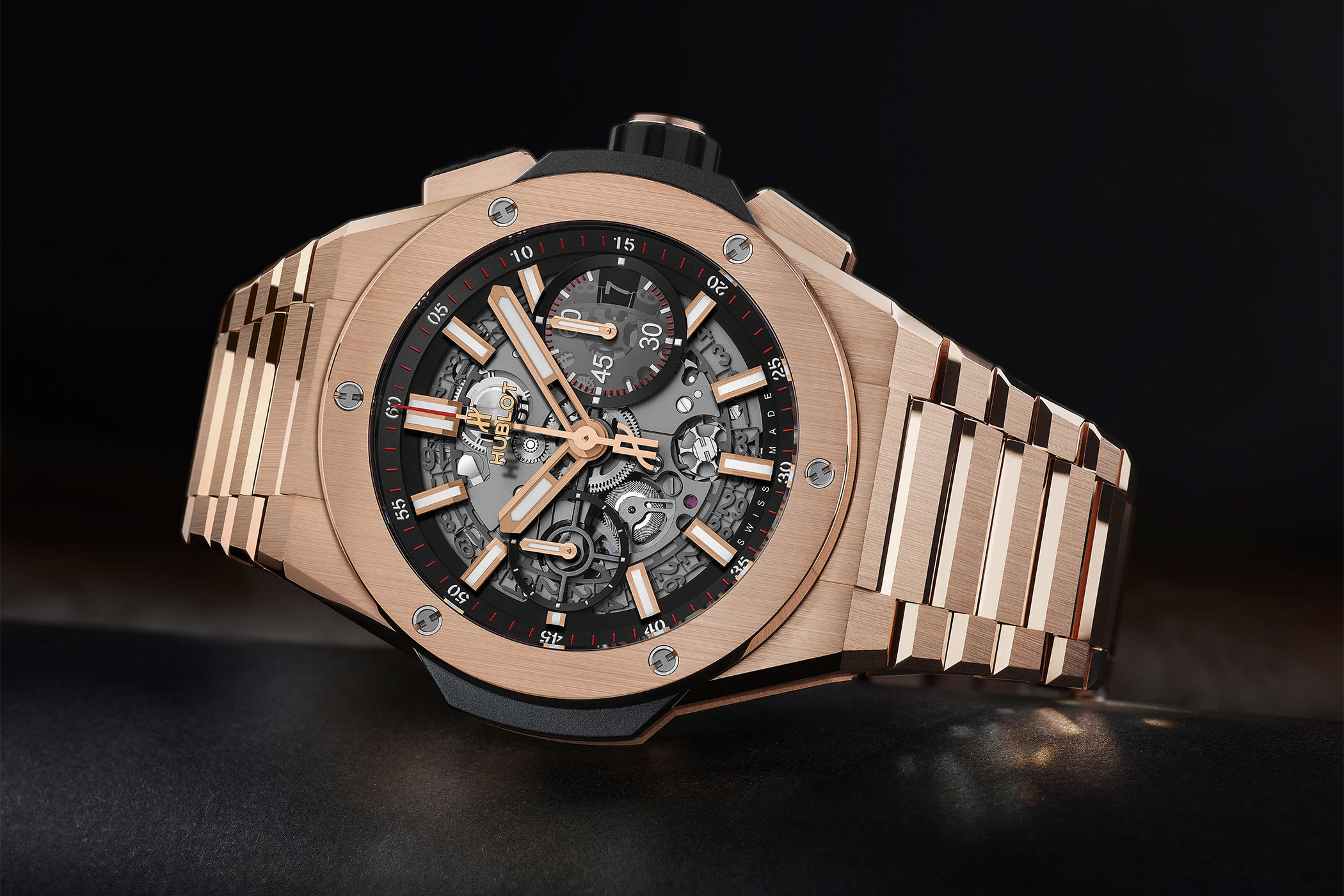
Of course, Hublot has not simply fitted its Big Bang Integral with a steel bracelet, but also created titanium, King Gold and black ceramic versions. These, of course, are three materials that are much more complex and costly to work with than stainless steel. The King Gold, used exclusively by Hublot, is an alloy of gold, copper and platinum, providing a more intense red gold tone.
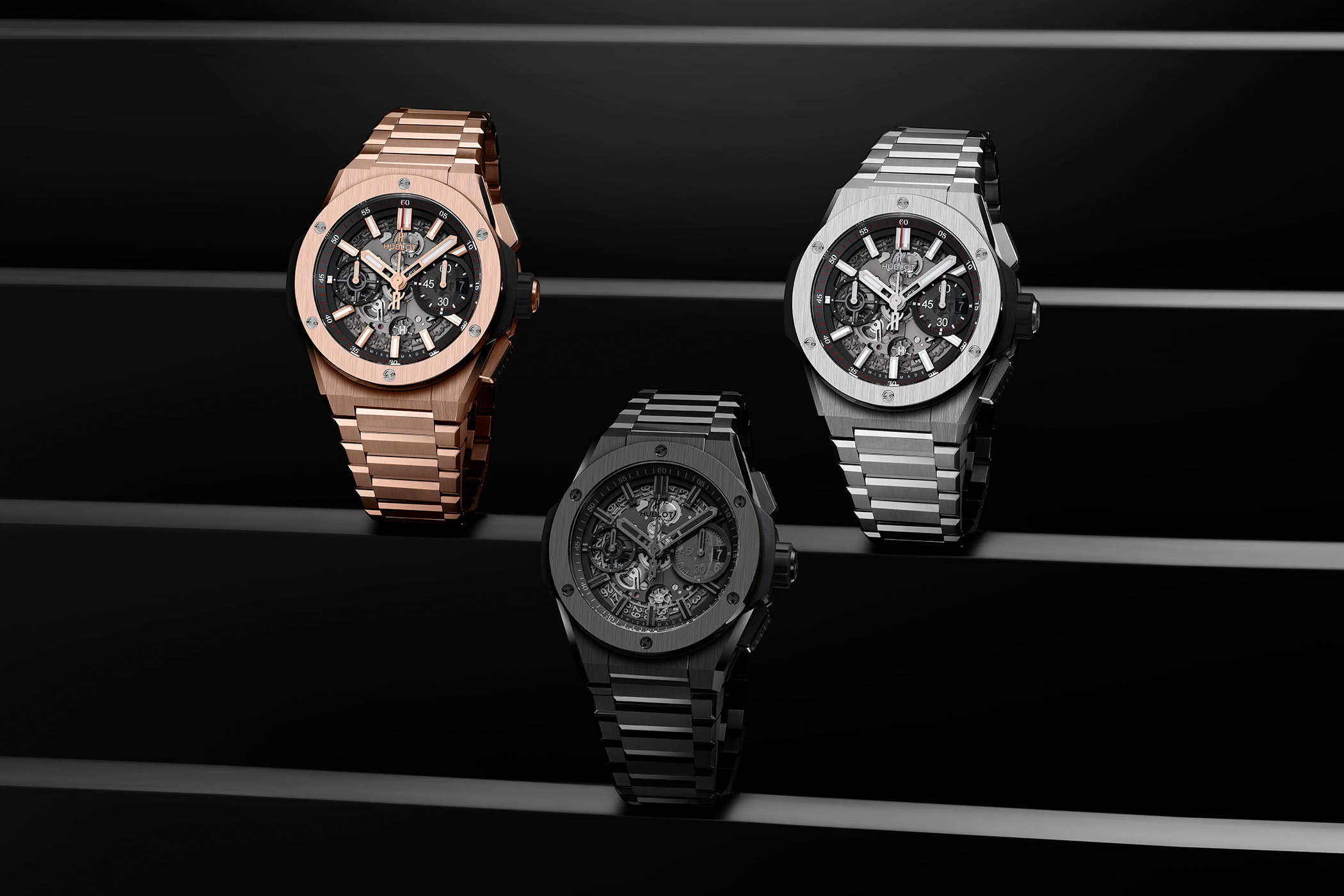
Inside the Big Bang Integral models ticks the in-house manufacture chronograph movement HUB1280 with flyback function and column wheel. It is the latest generation of the original Big Bang calibre Unico (HUB1240) and is slightly slimmer in height at 6.75 instead of 8.05 mm, which also means that the Big Bang Integral is around 1 mm flatter overall. The calibre HUB1280 runs with a strong power reserve of 72 hours.
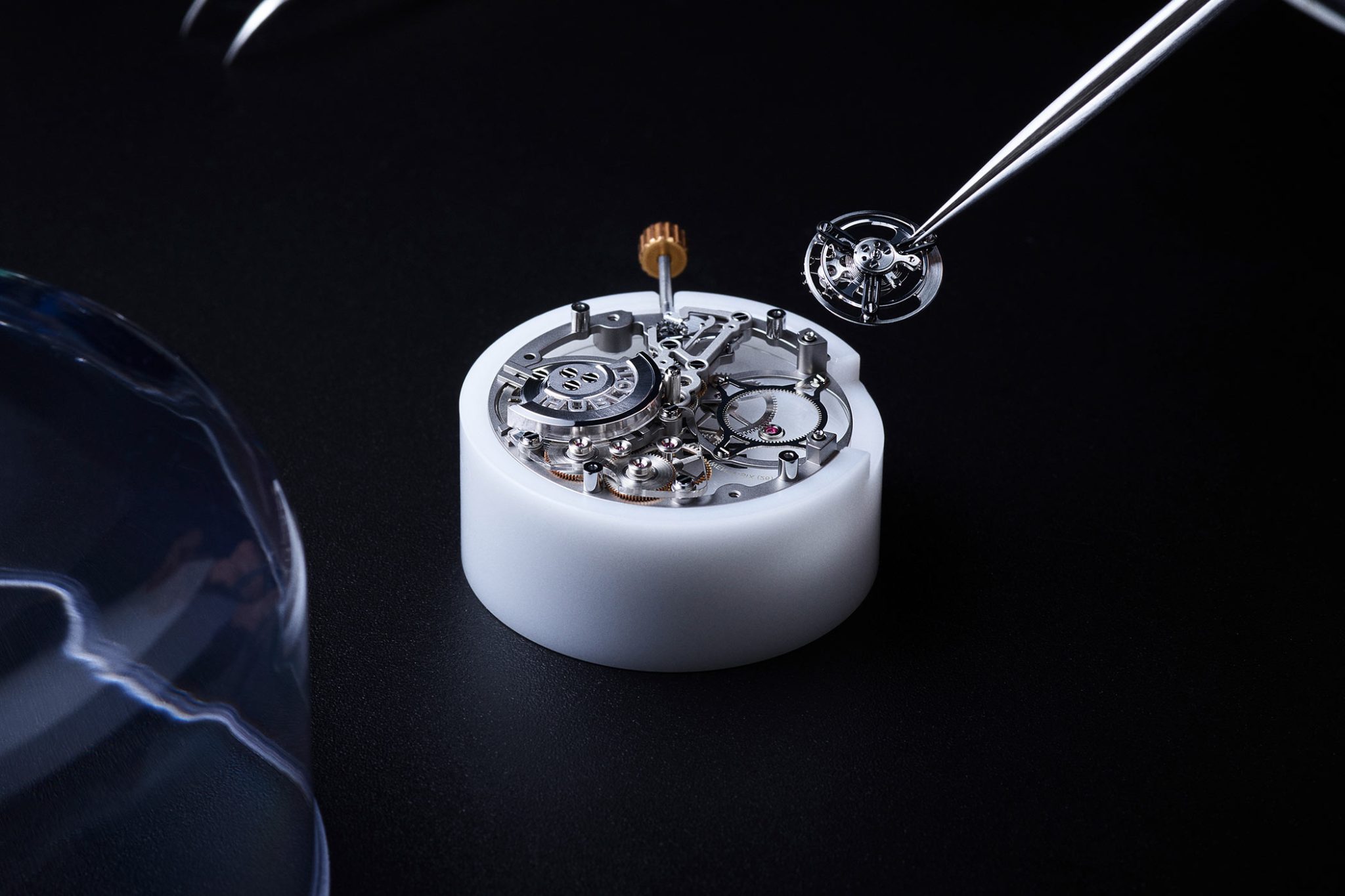
Incidentally, the black ceramic model first appeared in two versions. The first was the All Black (Ref: 451.CX.1140.CX), limited to 500 pieces, presented completely in black, with most of the movement components as well as the dial and pushers also blackened. Then there was the Black Magic (Ref: 451.CX.1170.CX), a somewhat lighter version that was not limited.
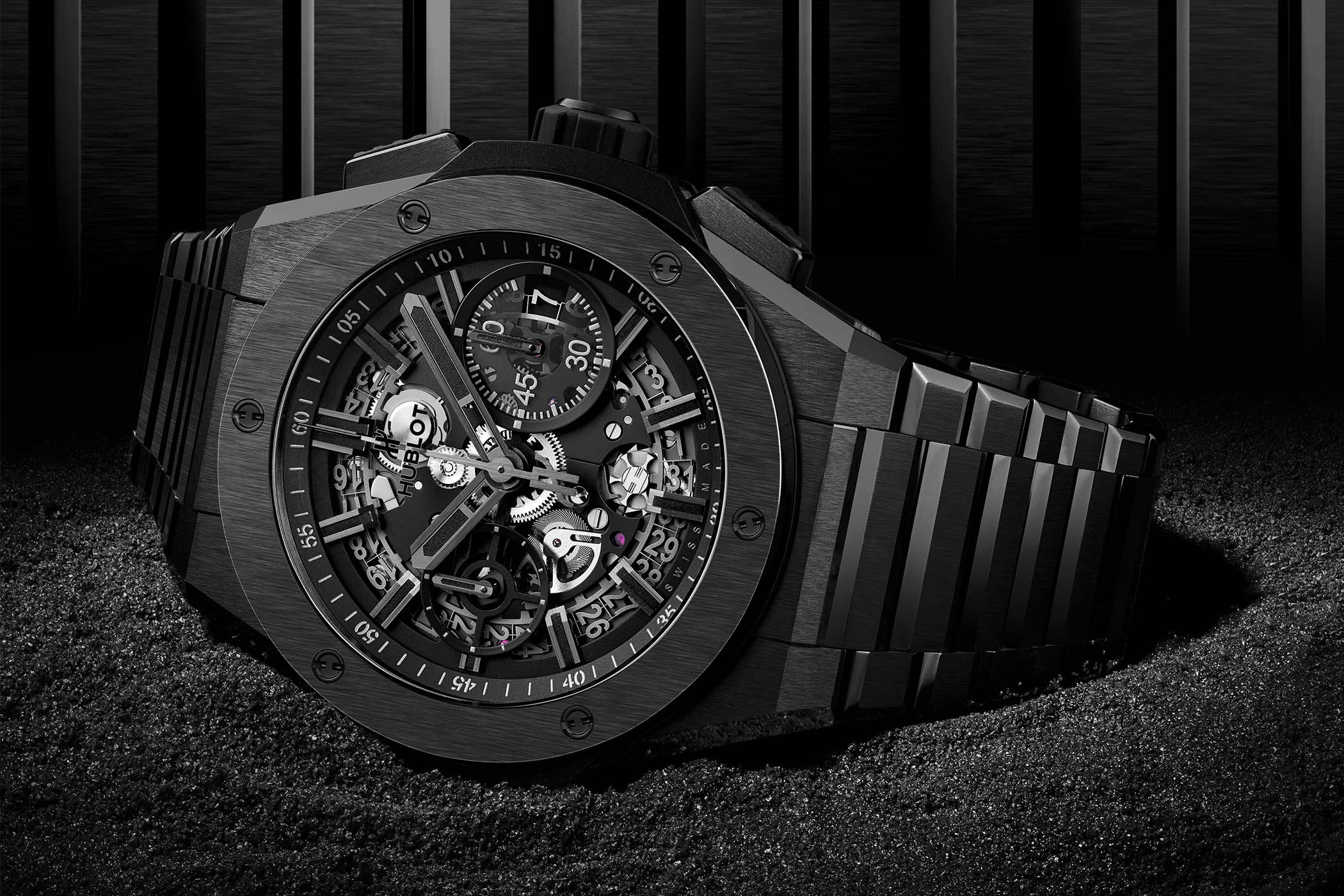
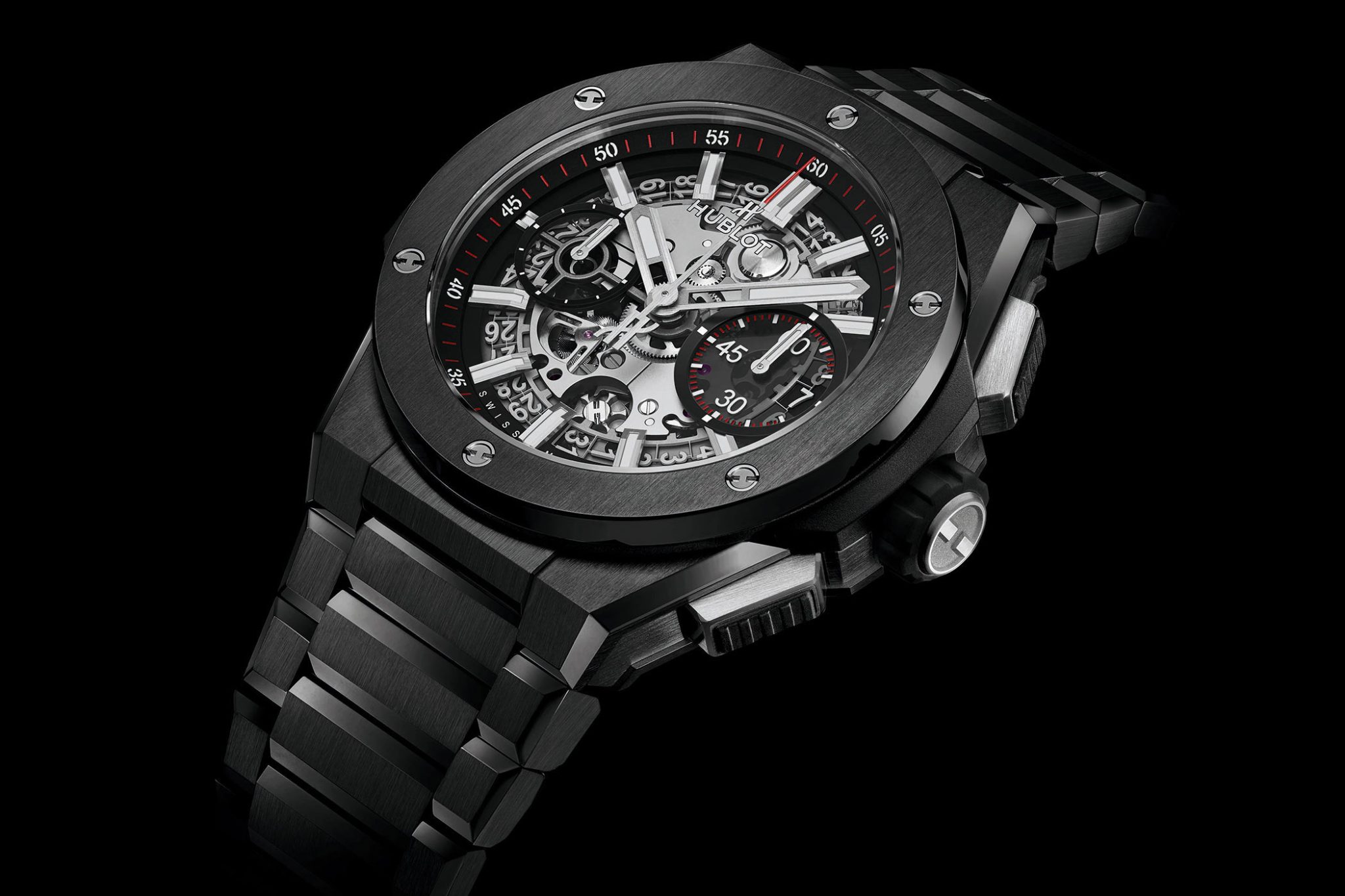
2021: The year of new ceramic editions & sapphire glass
Since the launch of the Big Bang in 2005, ceramic has become a trademark at Hublot. The material is two to three times harder than steel and simultaneously around 30% lighter, as well as being scratch-resistant. Furthermore, ceramic is particularly comfortable to wear due to its low thermal conductivity. However, the processing of the high-tech material is considerably more complex than that of stainless steel, but this does not dissuade Hublot – on the contrary, after black ceramic, the horology house introduced three new colour variations at the beginning of 2021 as part of the LVMH Watch Week: white, navy blue and grey.
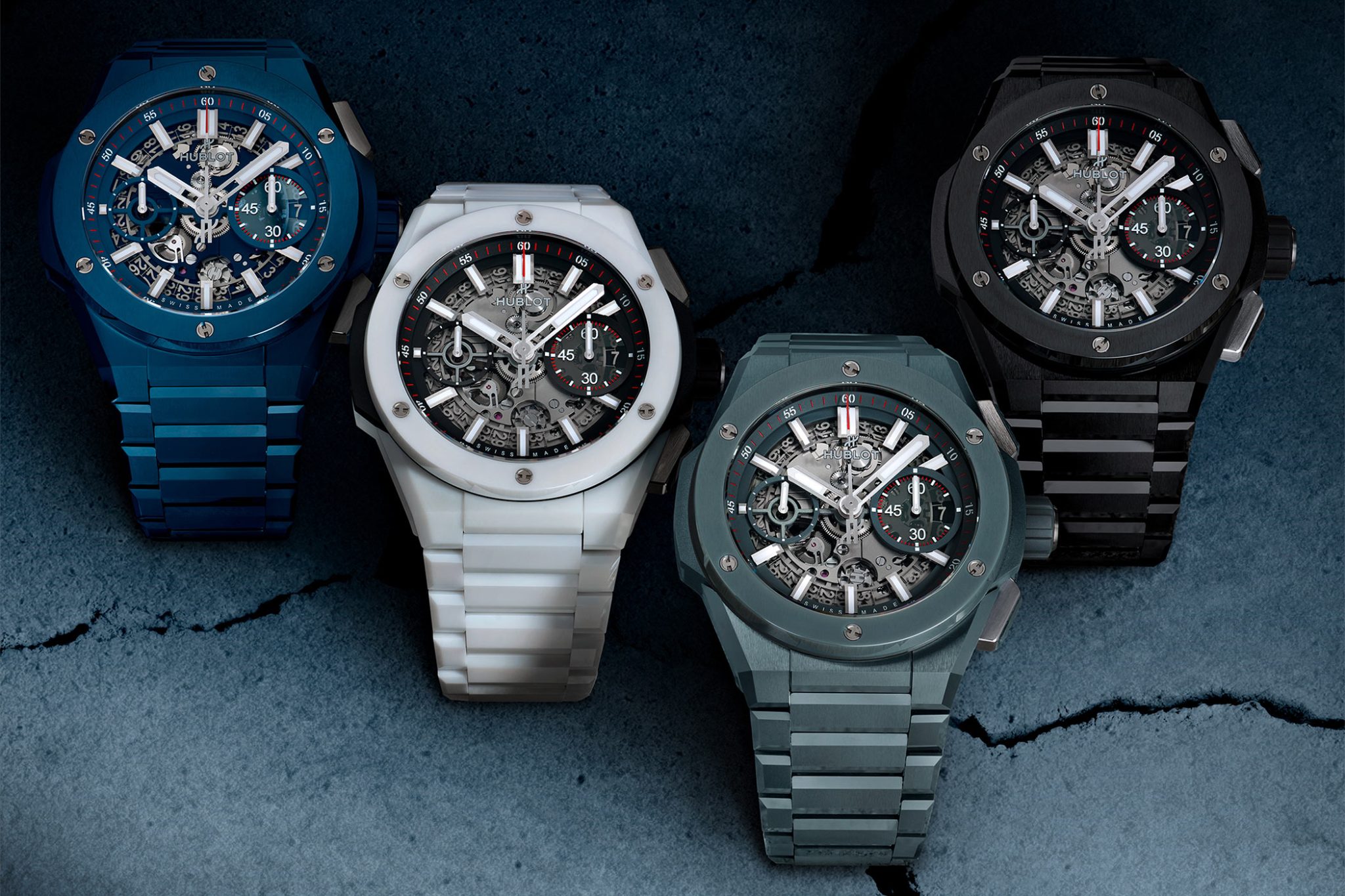
The three new Big Bang Integral versions with their 42 mm case are made entirely of ceramic. Only the flanks of the bezel use black, dark blue or grey composite material, while parts of the pushers and crown are rubber. Once again, powering these pieces is the manufacture movement HUB1280.
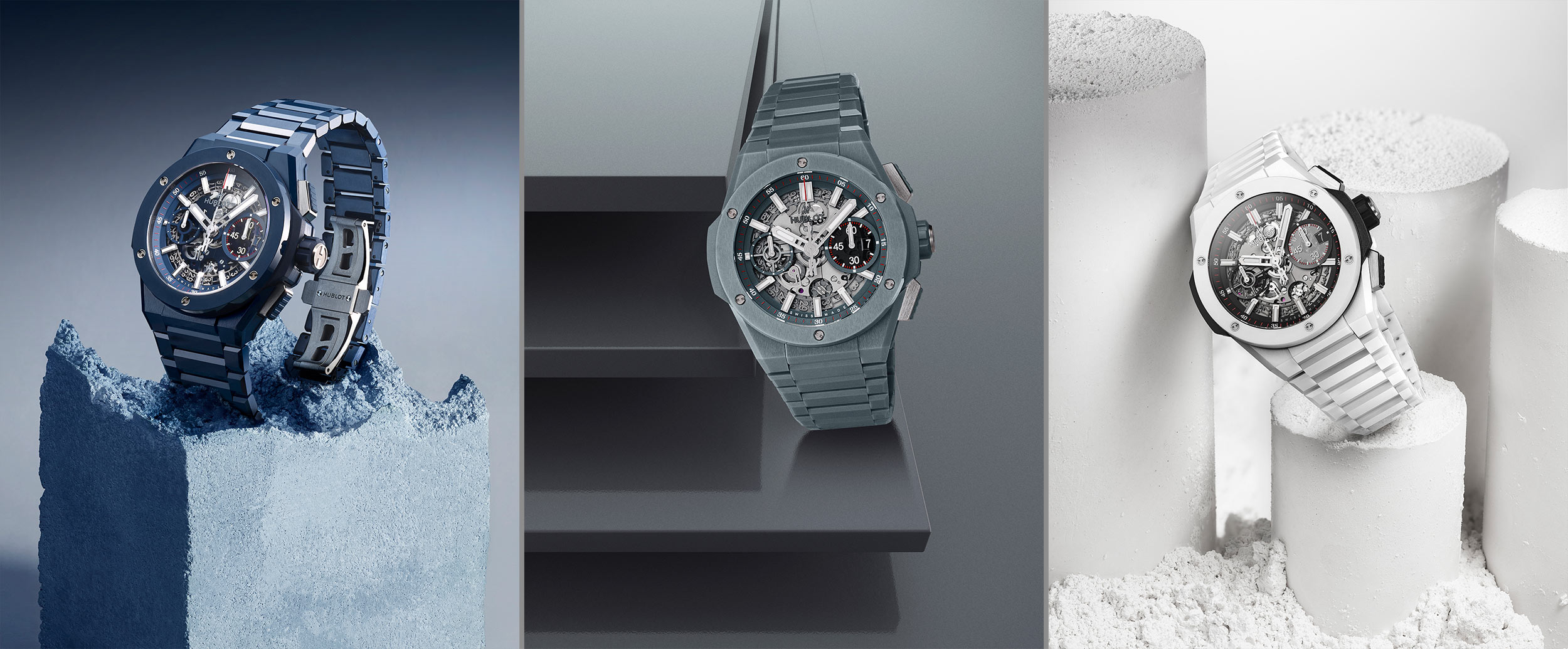
Big Bang Integral Tourbillon Full Sapphire
Those who are not yet so familiar with Hublot watches will inevitably experience a moment of incredulity when they see this watch. Aficionados, however, will see equipping a sapphire crystal model with an integrated strap as the next logical step. The reason for this is that, back in 2016, Hublot presented the Big Bang Unico Sapphire, the first mechanical watch made entirely of sapphire crystal.
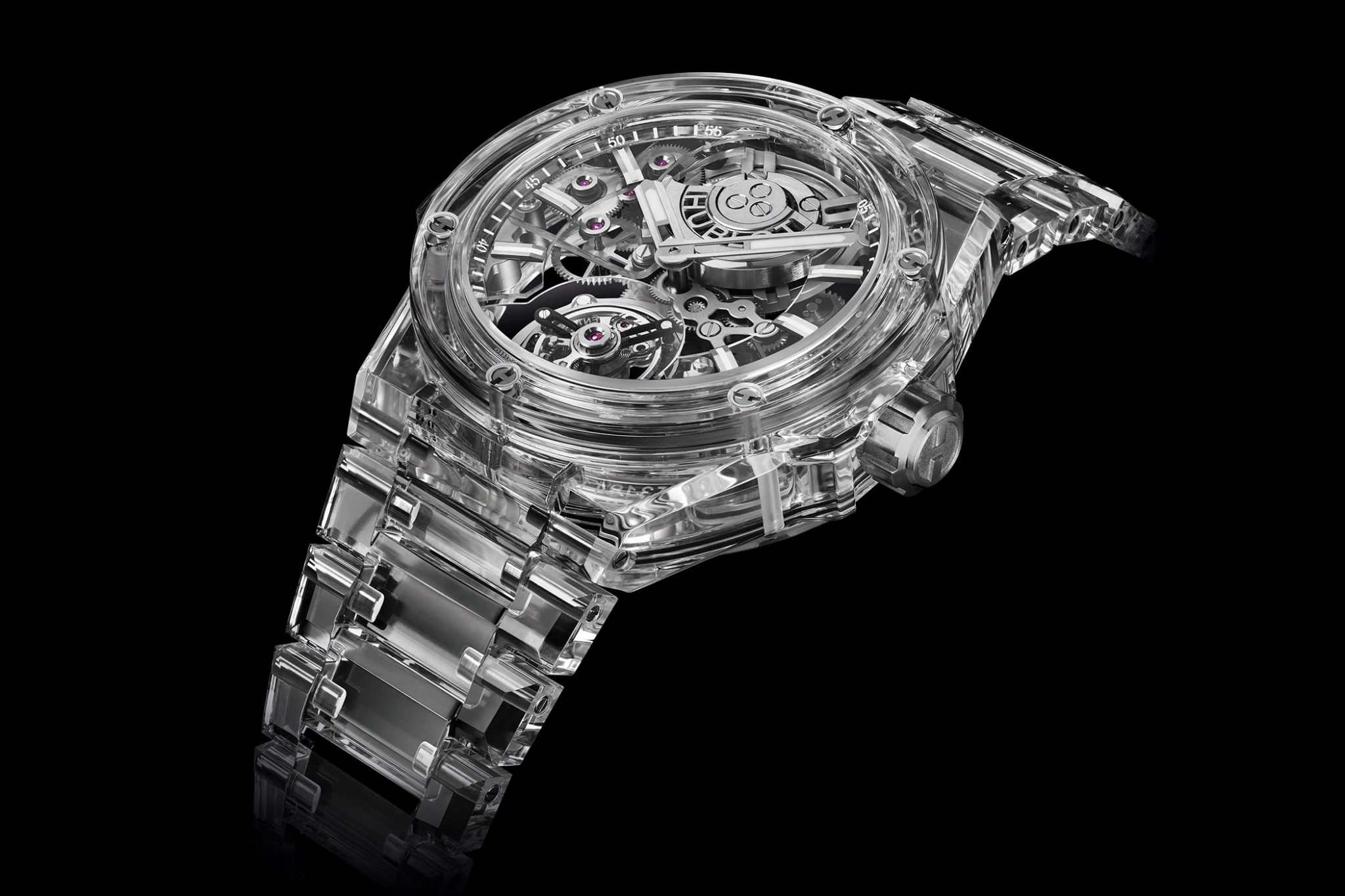
The resolution to create such a piece as this bordered on insanity; machining a material as hard as sapphire crystal was almost impossible. Nevertheless, Hublot learned to handle the material, consequently becoming the first brand to mass-produce sapphire crystal watches on an industrial scale. It took five years to develop and manufacture their first all-sapphire watch back then – and another five years for the further development of an integrated bracelet made of the extraordinary material.
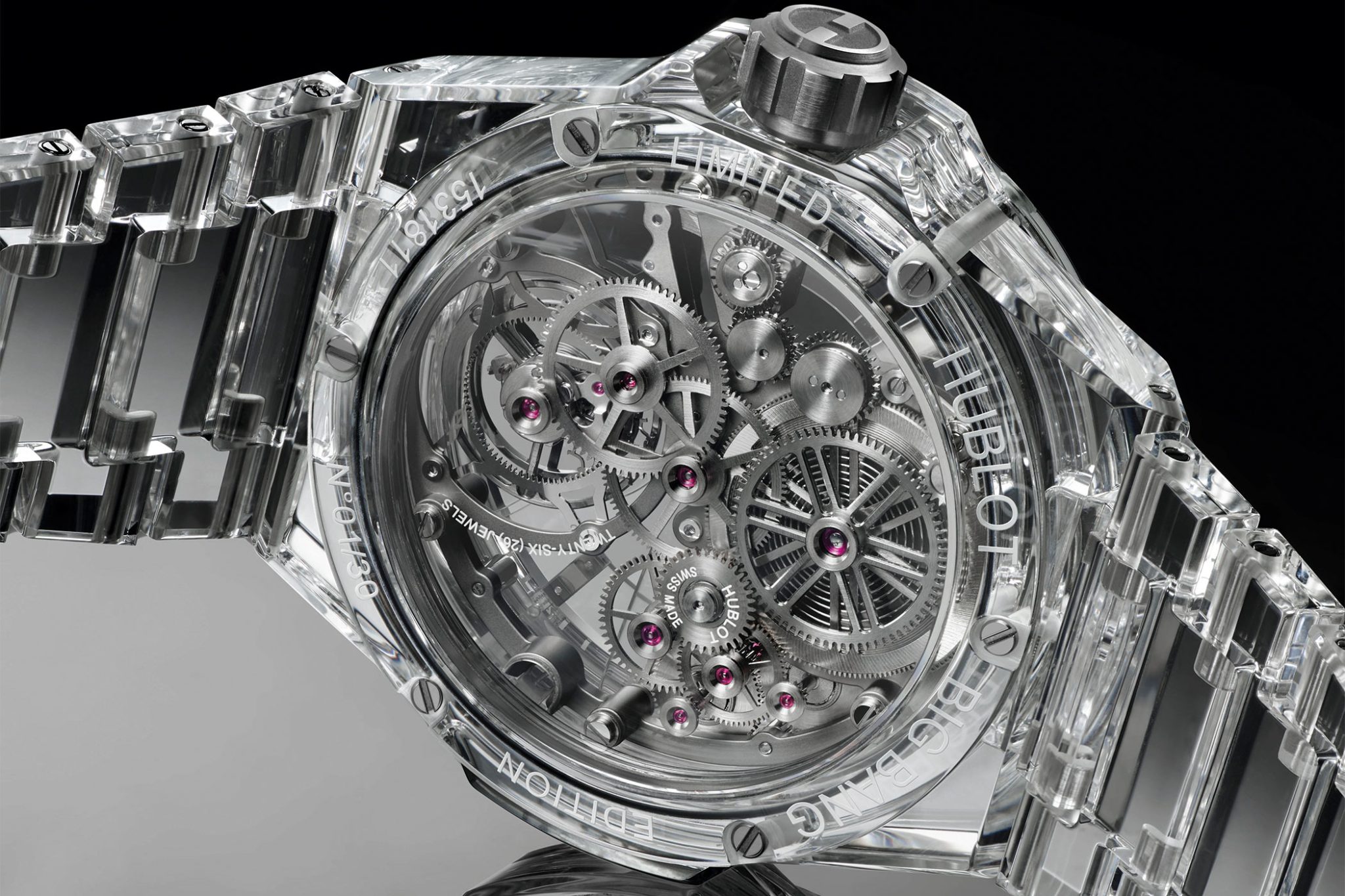
Yet the bracelet and case are not the end of the story. The bridges and other components of the new tourbillon calibre are also made of sapphire crystal. Almost all visible screws have been removed, and the bridges and main plate have been redesigned so that they seem to float in space. Powering the Big Bang Integral Tourbillon Full Sapphire is the automatic manufacture calibre HUB6035, which uses a micro-rotor at 12 o’clock and a Tourbillon at 6 o’clock. It was limited to only 30 pieces at 416,000 euros.
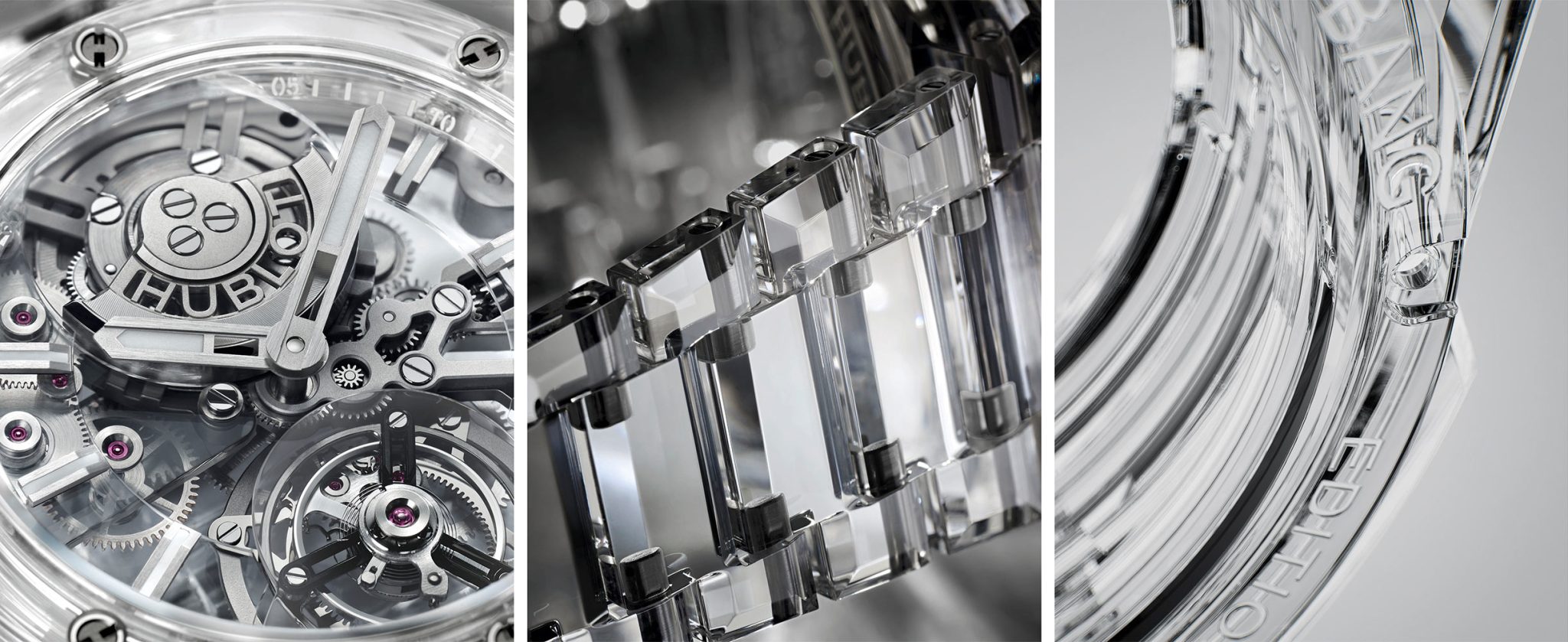
2022: Big Bang Integral Time Only & new yellow-gold models
At the beginning of the year, Hublot presented a more compact Big Bang Integral model with a case diameter of 40 mm. In keeping with the model name Time Only, the focus is on the hour, minute, second and date displays.
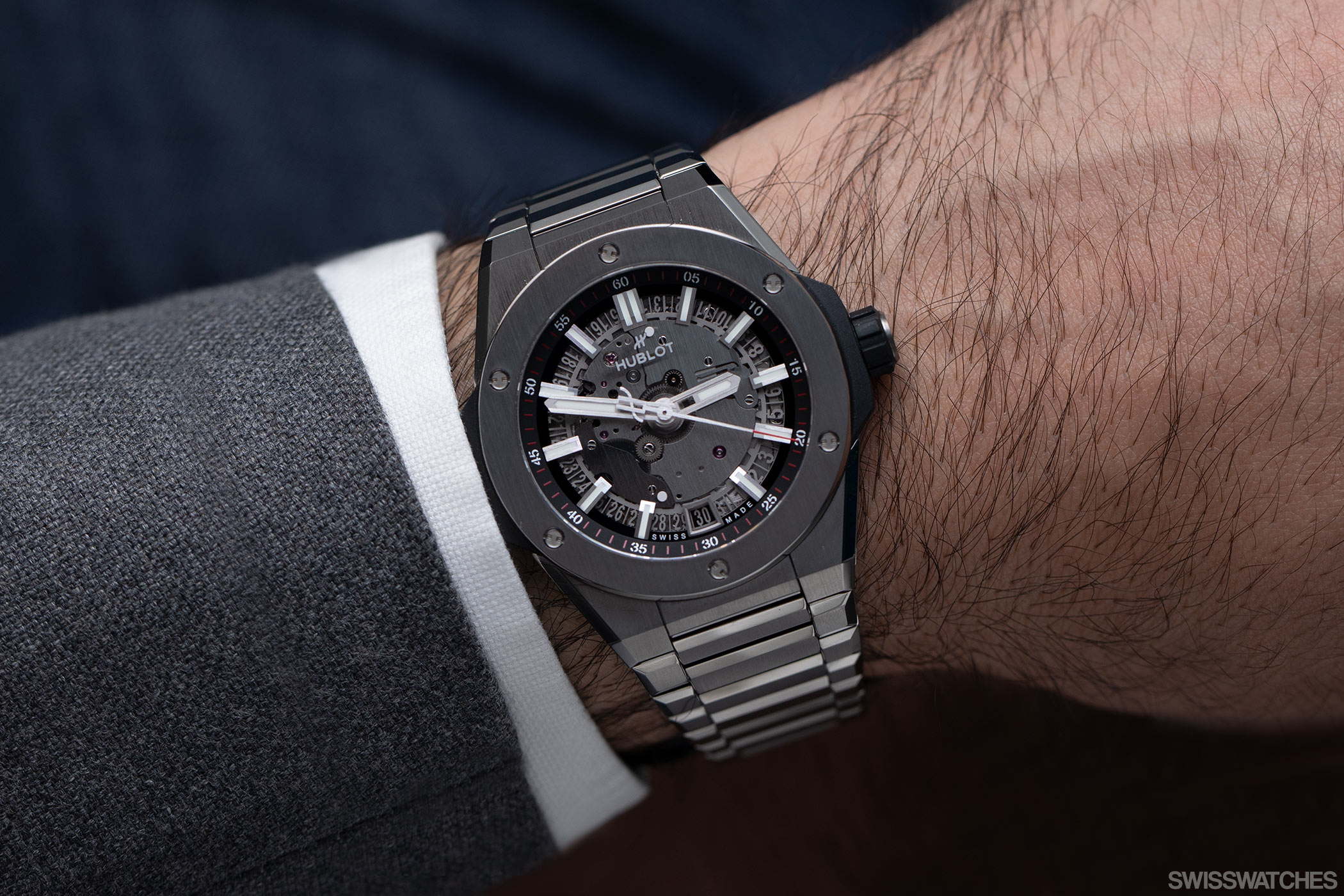
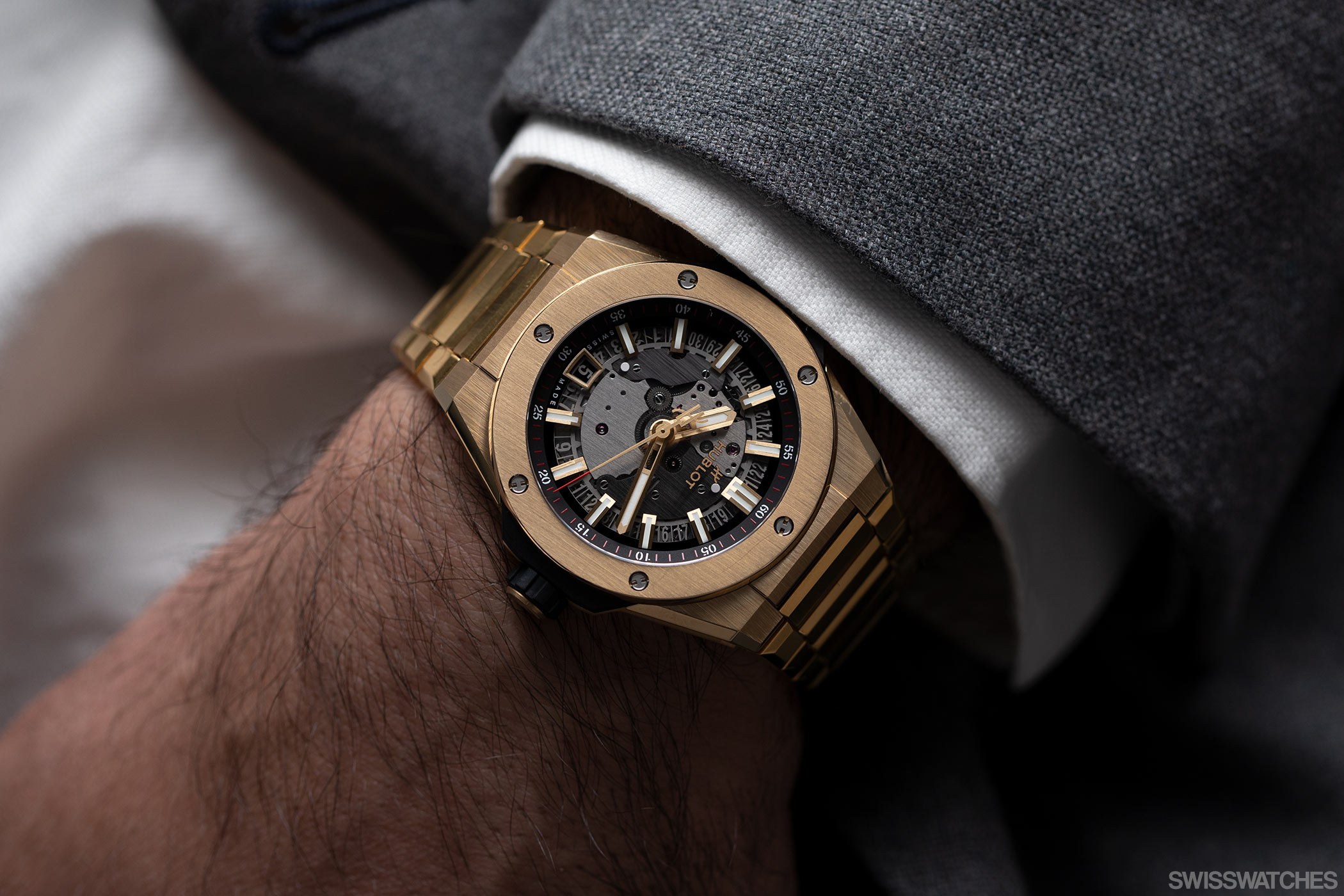
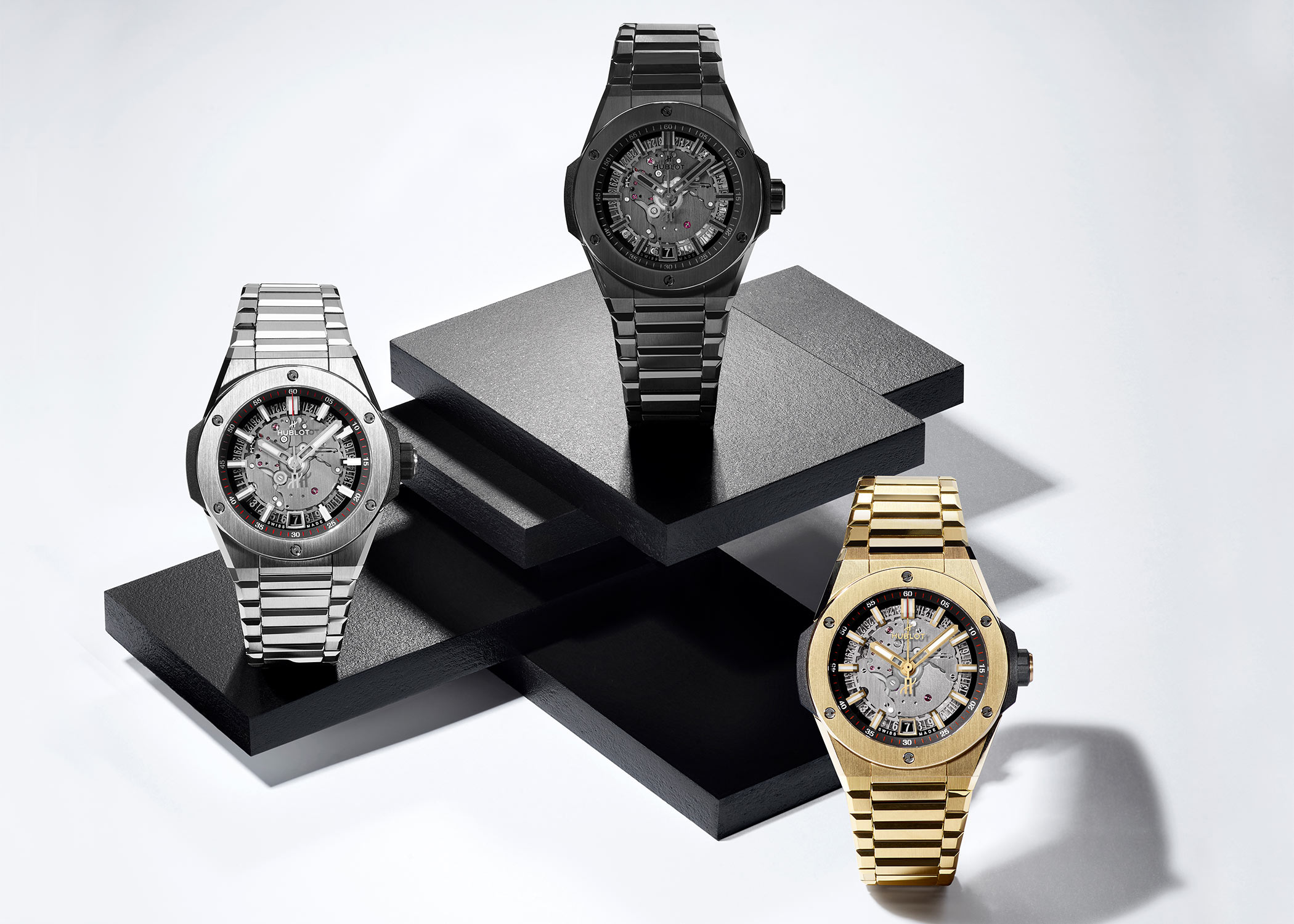
The Time Only is available in three new iterations: yellow gold, titanium or black All Black ceramic. Indices, hands and date window match to the respective model. Hublot create all three Time Only editions using one single block of material – only the bezel again uses a special composite material, while rubber covers the crown. The All Black variation is limited to 250 pieces. For the Time Only models, Hublot uses the MHUB1710 automatic movement with a 50-hour power reserve.
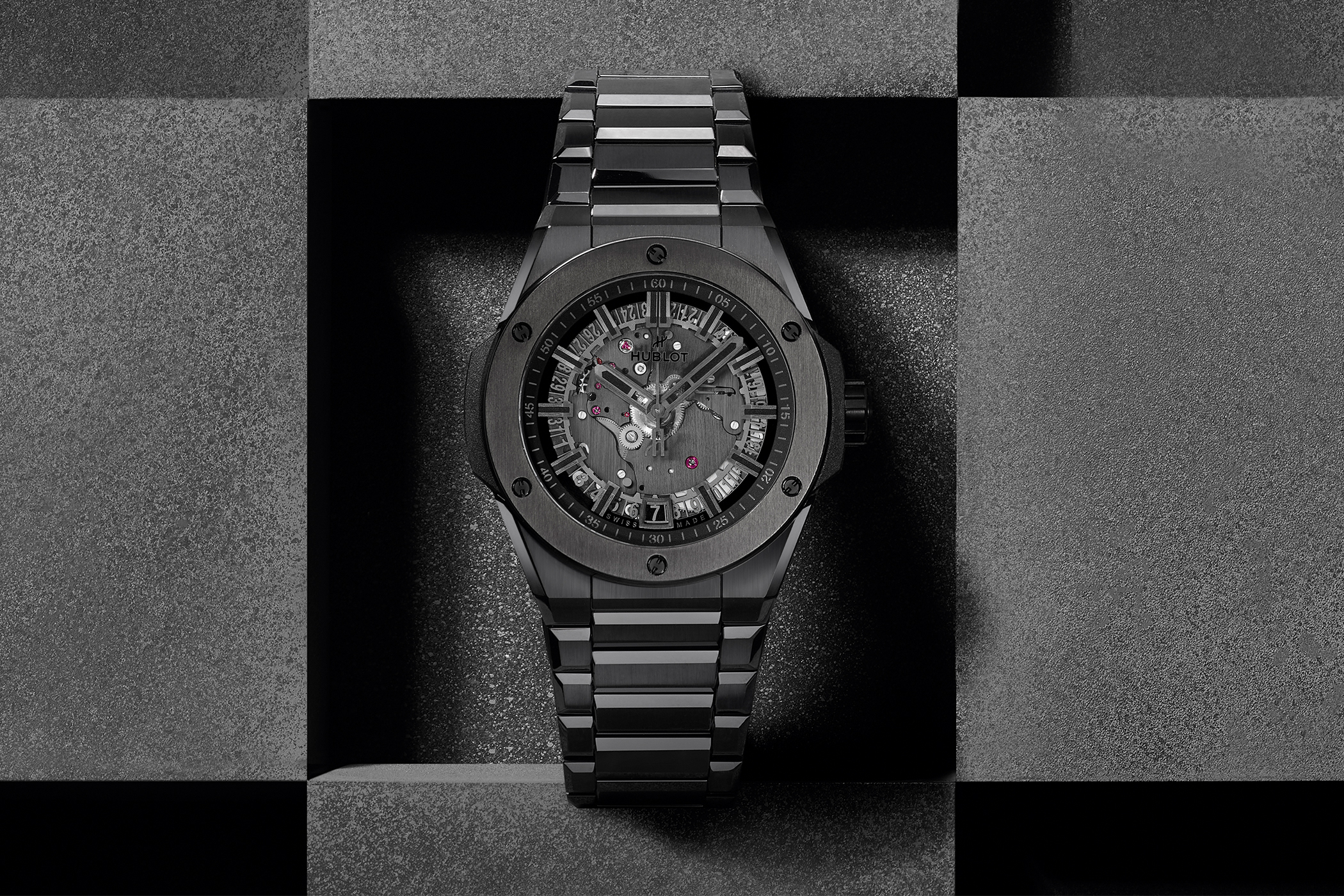
New yellow-gold models
During this year’s LVMH Watch Week, Hublot presented three new Big Bang Integral models in yellow gold – a tribute to the case material that started it all in 1980. The case, bezel and integral bracelet are made entirely of gold. Furthermore, two of these versions are set with diamonds; the exquisite Yellow Gold Pavé is set with 1026 diamonds (in 5.4 carats) and the ultimate Yellow Gold Joallerie glitters with 594 diamonds (in 17 carats).
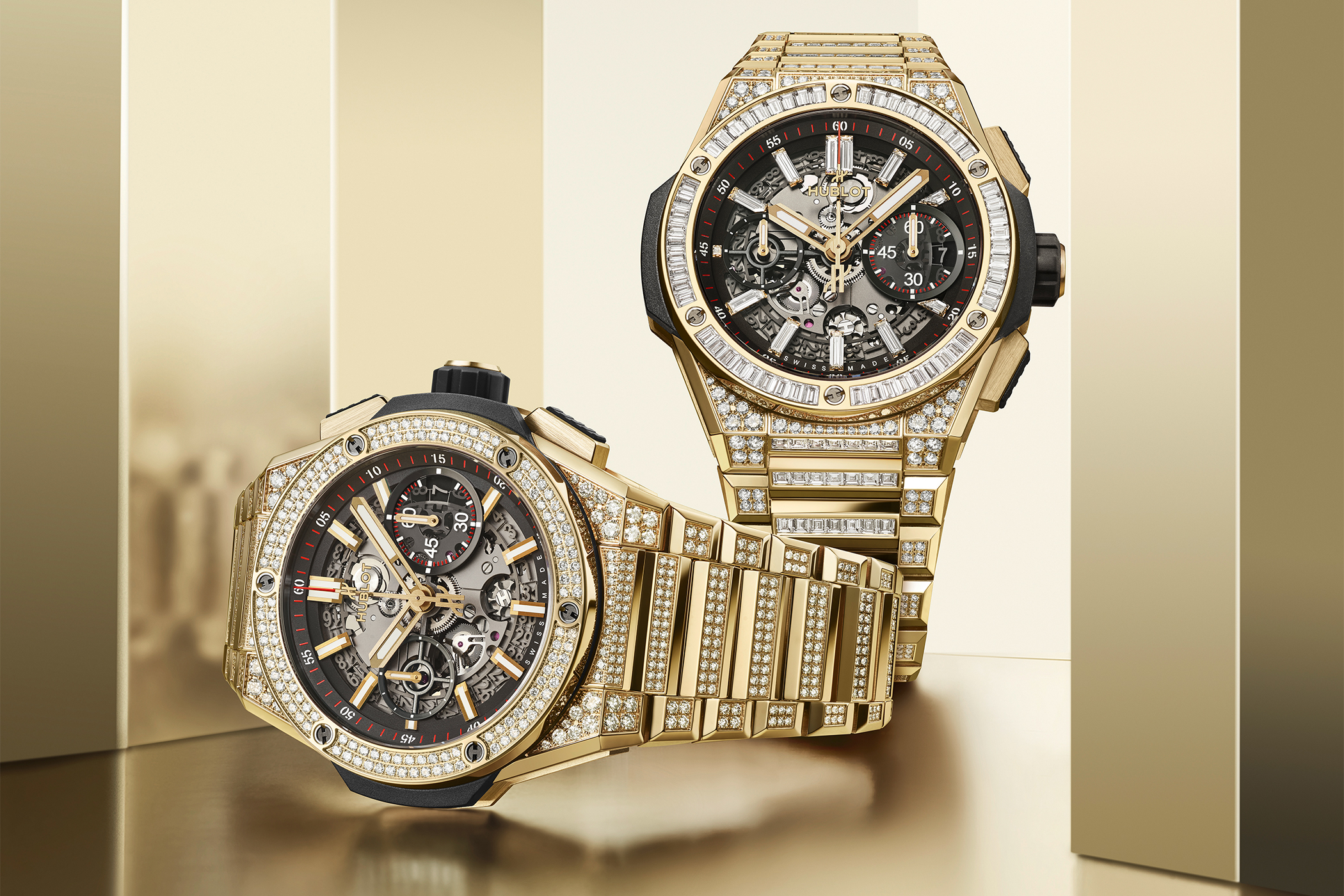
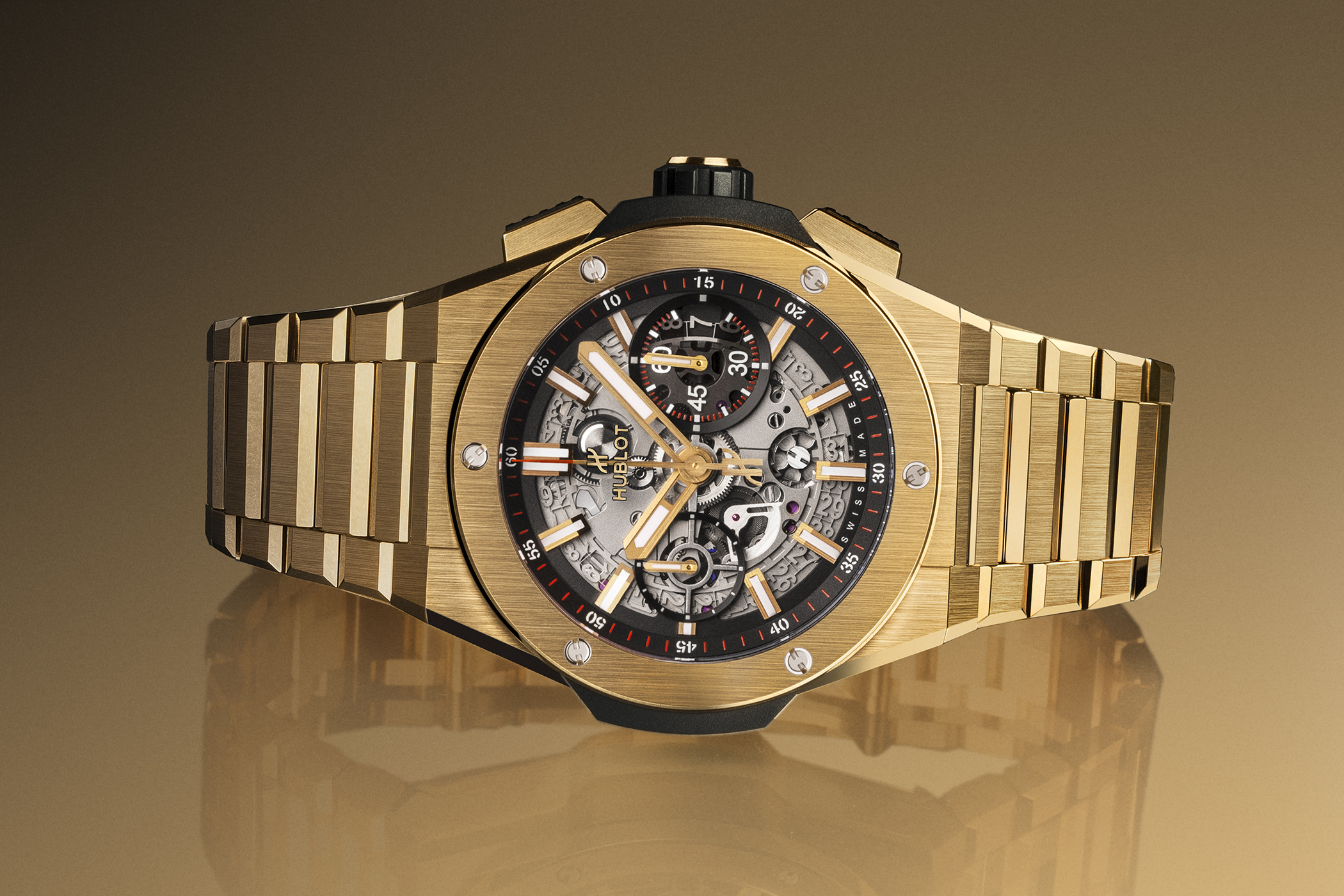
2022: Watches & Wonders novelties
Hublot is not only known for its diversity of materials and their ‘fusion’, but also for its distinct sense and feeling for colours. In this respect, it was perhaps already foreseeable that the Big Bang Integral would soon appear in further shades. Therefore, as part of this year’s Watches & Wonders, the horology house has taken us on a colourful journey around the world. The inspiration for an indigo blue came from Morocco, azure blue from the South Seas, sandy beige from both the deserts around the world as well as Caribbean beaches. Meanwhile, a rich jungle green has arisen from the rainforests.
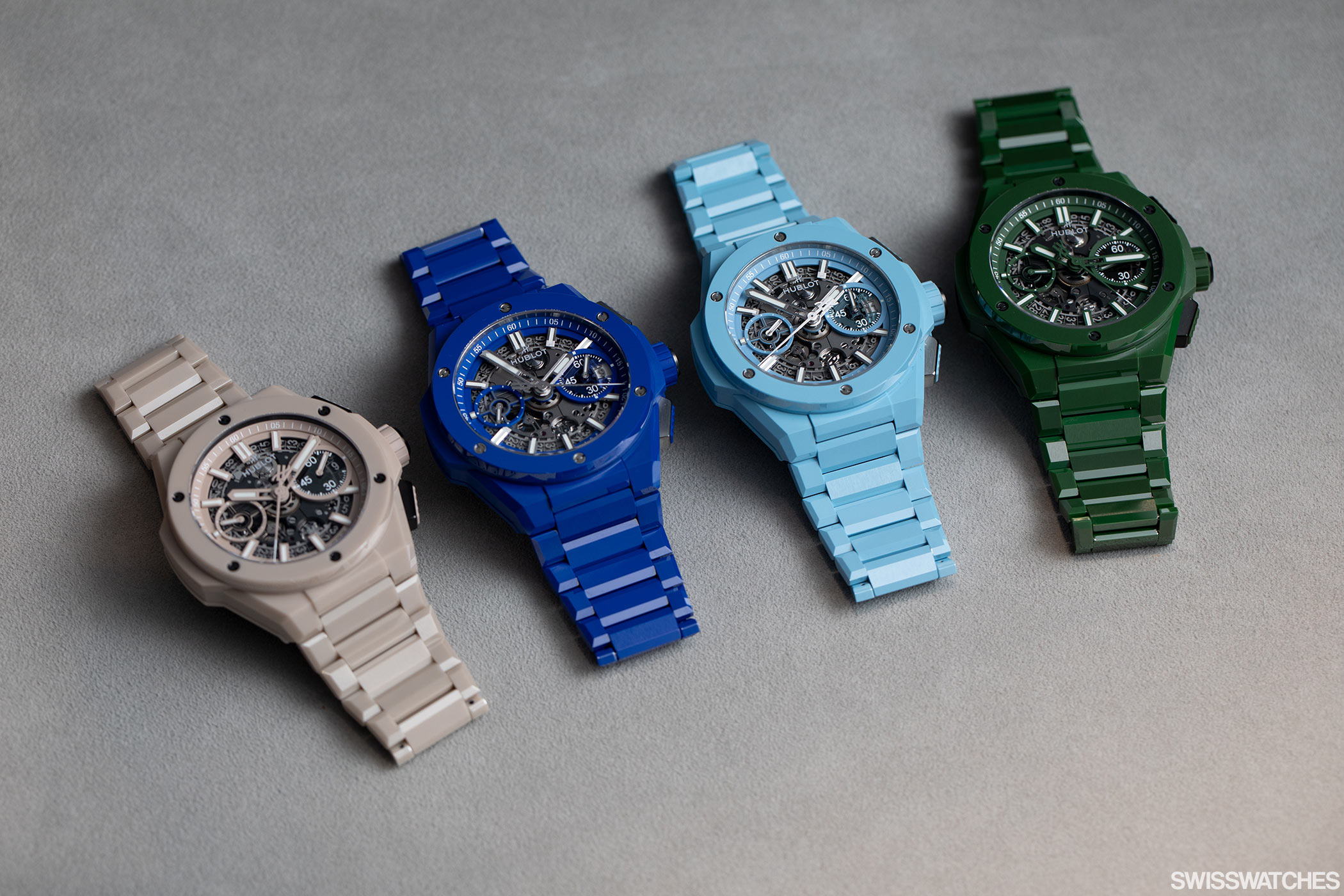
One particularly beautiful, successful detail is to be found on the pushers. Although they are kept in a sober metal tone, the structured upper side of the pushers is colour-coordinated with the respective model colour. The integrated three-row bracelets till keep the same unchanged polished and satin-finished surfaces, as well as bevelling and chamfering. Once again, they run with the latest-generation HUB1280 manufacture movement, with a power reserve of 72 hours.
